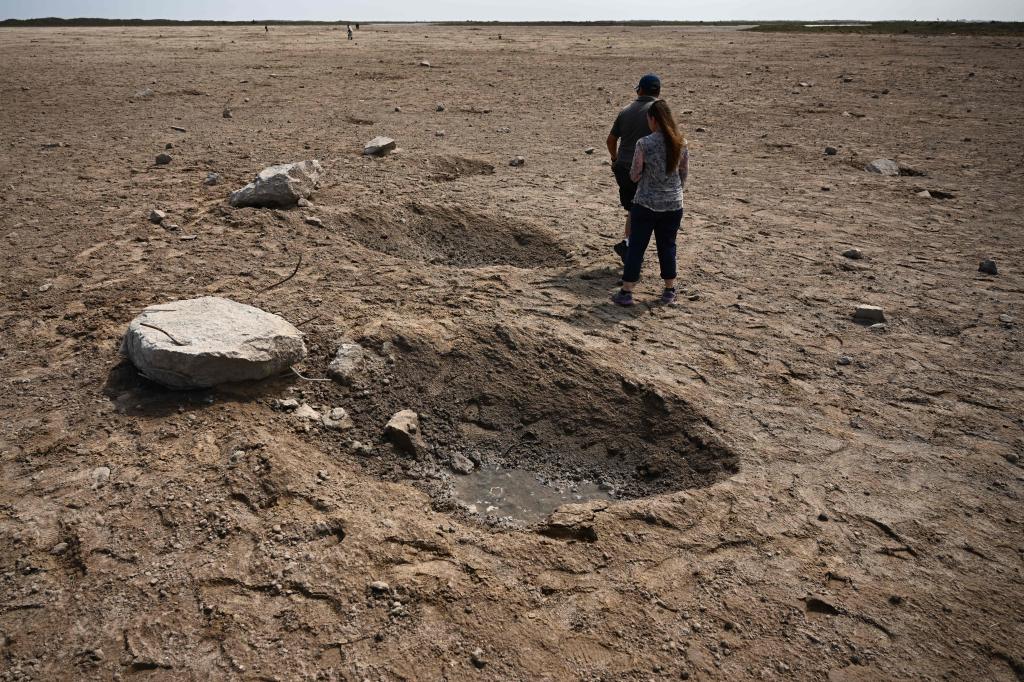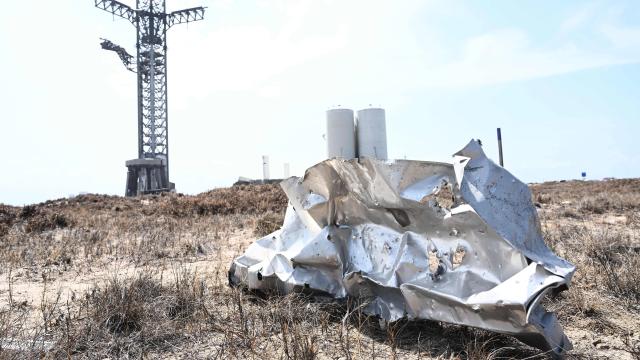The damage caused by the SpaceX Starship explosion on April 20 is coming to light, and the environmental destruction the blast left behind in Boca Chica is more extensive than wildlife officials expected. It took just under four minutes after launch for several engines aboard Starship to malfunction — leading to the blast — but the failed attempt left a 385-acre debris field and sparked a 3.5-acre fire, as Bloomberg reports.
Chunks of concrete and twisted rebar were strewn along the perimeter of the blast, shocking U.S. wildlife scientists who visited the former launch pad. Fish and Wildlife Service officials were not allowed on site until 48 hours later, which made them suspicious due to the delay. When they were allowed to survey the damage, FWS found the pad site was totally destroyed in the explosion and chunks of concrete had been scattered around, even into the nearby surf.

Bloomberg pieced together the damage after submitting a Freedom of Information Act request, which yielded over 1,100 pages of emails and other documents from FWS. Per Bloomberg:
Concrete chunks had left craters a foot deep and were strewn across tidal flats, almost four acres of state park were burned, and seven bobwhite quail eggs and a collection of blue land crabs had been incinerated.
The officials, biologists working with the Fish and Wildlife Service, privately expressed disbelief at the extent of the scene, records obtained by Bloomberg News show. “The explosion was so extensive it sent concrete chunks flying into the surf,” said one email from Chris Perez of the FWS to colleagues. The environmental damage was due to the tremendous amount of force required to get the world’s largest rocket off the ground.
In the aftermath of the explosion and ongoing investigation overseen by the feds, Fish and Wildlife officials told the U.S. Department of Interior that SpaceX may have to re-design the entire launch pad, and added that the site “probably won’t see another launch for a while.”
Officials questioned the lack of flame-suppression technology at the site, which is standard across the launch industry. The SpaceX launch site had no flame diverters, no flame trenches, nor a water deluge system. These are used to “dampen and divert the intense forces, heat and gases” created during a launch.
But since these were absent from the launch pad, the force of the explosion reportedly let loose a “‘rock tornado’ of power, heat and gas” that blew a hole in the ground under Starship. And debris went flying, harming a public state park and endangering local flora and fauna. Government agencies, including the FAA and FWS may require further environmental safety measures before clearing another launch attempt — in the wake of the latest damage. Elon Musk’s space firm has long wrought both direct and indirect harm to the region.
The Starship rocket is supposed to ferry humans to the Moon and, eventually, to Mars, but the world’s biggest rocket is still struggling to get off the ground. Elon Musk has referred to such incidents as part of his “successful failure formula,” according to Reuters.
A senior adviser to SpaceX said the company embraces failure when its consequences are low. But who gets to decide when the consequences are low or not? Musk? SpaceX? The residents of the region where Musk has set up shop? Or maybe the flora and fauna?
In light of the harm SpaceX keeps causing South Texas, Musk should amend the formula and call the explosion a failure, simply put. Then, Musk could take responsibility and adopt safety measures that experts have been recommending for years, which would help ensure SpaceX keeps working toward a safe launch without incurring more damage to the area.

